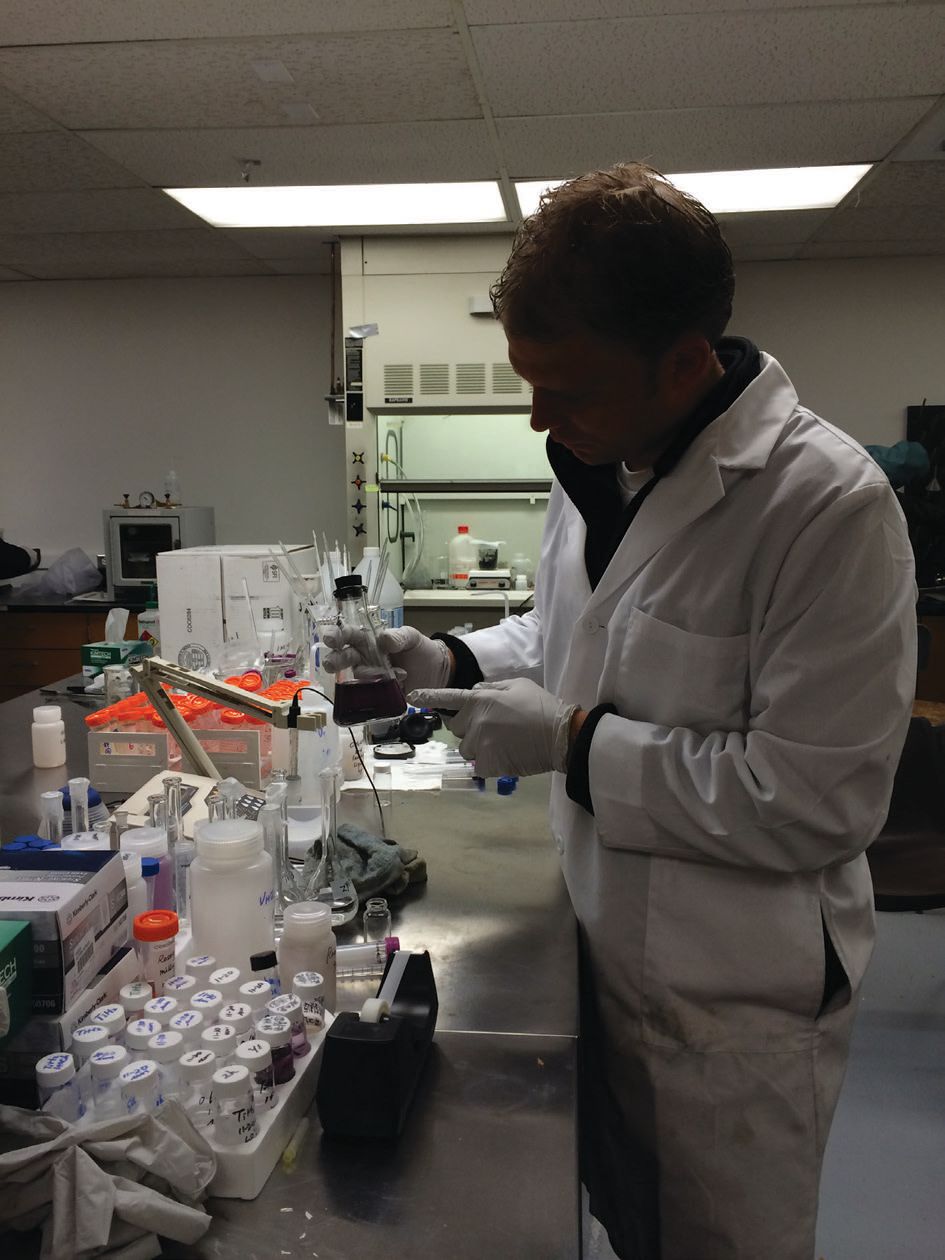Cost-effective titanium extraction
Dr. Neil Canter, Contributing Editor | TLT Tech Beat July 2014
Direct reduction of titanium hydride uses 62 percent less energy than traditional processes.
KEY CONCEPTS
•
A major hindrance to using titanium is the high cost of extracting the metal through the use of the Kroll process.
•
Titanium hydride is the key intermediate in a new method that extracts titanium under less severe conditions.
•
Modeling studies show that titanium hydride process is far more energy efficient than the Kroll process.
MORE ATTENTION IS NOW PAID TO USING LIGHTER WEIGHT METALS as a means to improve the performance of automobiles and airplanes while also reducing energy costs. A main driver in the U.S. is the need to improve the Corporate Average Fuel Economy (CAFE) for automobiles to 54.5 miles per gallon by 2025.
The metals under evaluation to reduce the weight of automobiles are lighter weight steels, aluminum, magnesium and titanium. One of the problems with using aluminum has been this metal’s lower mechanical strength compared to steel. In a previous TLT article, researchers increased the strength of the common aluminum alloy 7075 to a level comparable to carbon steel without sacrificing ductility (
1). The process used was a severe plastic deformation method known as high-pressure torsion.
Titanium has several very useful properties that fit well with the current driver to improve fuel economy. This metal has a density that is approximately half of steel yet has alloys that are stronger than steel. Another benefit is that the corrosion inhibition characteristics of titanium are superior to stainless steel alloys.
Unfortunately, a major hindrance preventing more widespread use of titanium is the cost of extracting the metal from ores present in the earth. The most widely used method to extract titanium is the Kroll process, developed in the 1930s. Titanium is primarily present in the earth in the mineral ilmenite, which is mainly iron titanium oxide.
The Kroll process extracts titanium through a series of steps at elevated temperatures in excess of 980 C. Zhigang Zak Fang, professor of metallurgical engineering at the University of Utah in Salt Lake City, Utah, says, “The Kroll process involves first removing pig iron from the titanium dioxide through a carbothermic process, then followed by chlorination to form titanium tetrachloride and reduction with magnesium in a high temperature furnace that can take several days and consume a large amount of energy.”
As a result, extraction of titanium puts this metal at an economic disadvantage compared to aluminum and copper, according to Fang. He says, “The main problem with isolating titanium is the metal’s very strong affinity for oxygen. This means that it is very challenging to find a cost effective way to reduce titanium dioxide to the metal.”
A similar problem for titanium takes place when it is processed in an operation such as milling or rolling. Fang says, “During every step, the titanium develops an oxide coating on the surface that needs to be etched away. This means that production of titanium leads typically to a 60 to 70 percent yield with the remainder wasted.”
The development of a more cost effective way to extract titanium at a lower temperature has the potential to enable the metal to be more widely used. Such a technique has now been developed.
TITANIUM HYDRIDE
A new pathway has been developed to extract titanium metal based on the use of titanium hydride as a key intermediate (Figure 3). Fang says, “We have been working with metal hydrides such as magnesium and lithium over the past 10 years in other applications. Titanium hydride became of interest because it is more stable in air and less sensitive to oxidation than titanium. The use of this titanium derivative enables us to overcome the element’s affinity for oxygen.”
 Figure 3. A new, more efficient process to extract titanium has been developed that involves the use of titanium hydride as a key intermediate. (Courtesy of University of Utah)
Figure 3. A new, more efficient process to extract titanium has been developed that involves the use of titanium hydride as a key intermediate. (Courtesy of University of Utah)
Theoretical analysis was conducted to determine the viability of using titanium hydride as an intermediate. Titanium hydride can be produced through the reaction of the titanium ore with magnesium hydride. The researchers examined the kinetic and thermodynamic factors enabling this reaction to occur and found that by adjusting the temperature to 500 C and the hydrogen pressure to one atmosphere, titanium hydride is formed. Fang says, “Thermodynamic modeling was done to show what conditions need to be put in place so that titanium dioxide will react with magnesium hydride in a hydrogen atmosphere to produce titanium hydride.”
The next series of steps will be used to remove various impurities from the titanium hydride mixture. Magnesium oxide, a byproduct from the formation of titanium hydride, can be reacted with hot ammonium chloride in the presence of a chelating agent. Other impurities are removed through the use of a hot base (sodium hydroxide) and a dilute mineral acid such as hydrochloric acid.
Experimental work was done with titanium ore containing nearly 80 percent titanium dioxide and lower levels of ferrous oxide, magnesium oxide, silicon dioxide and aluminum trioxide. The use of a eutectic mixture of sodium and magnesium chloride salts helped to facilitate titanium hydride formation.
After removal of impurities, energy-dispersive spectroscopy showed a titanium hydride concentration of 99 percent. In the final dehydrogenation step, titanium metal was isolated by subjecting titanium hydride to heating above 400 C in an argon atmosphere. X-ray diffraction spectrum analysis verifies the presence of titanium.
Based on modeling, the researchers have been able to determine the energy savings potential of this direct reduction pathway. Fang says, “We found that direct reduction of titanium hydride uses 62 percent less energy than the Kroll process.”
The ability to extract titanium metal using a process that is run at lower temperatures and ambient processes has the potential to enable titanium to be available at a lower cost. Fang says, “This is early stage research where we have determined the feasibility of the approach. Future work will now focus on determining if we can produce titanium at a high enough purity and a reasonable yield cost so that direct reduction can be commercialized.”
Additional information can be obtained from a recent article (
2) or by contacting Fang at
zak.fang@utah.edu.
REFERENCES
1.
Canter, N. (2011), “Super-strong, ductile aluminum,” TLT,
67 (1), pp. 10-11
2.
Fang. Z., Middlemas, S., Guo, J. and Fan, P. (2013), “A New, Energy-Efficient Chemical Pathway for Extracting Ti Metal from Ti Minerals,”
Journal of the American Chemical Society,
135 (49), pp. 18248 – 18251.
 Neil Canter heads his own consulting company, Chemical Solutions, in Willow Grove, Pa. Ideas for Tech Beat items can be sent to him at neilcanter@comcast.net
Neil Canter heads his own consulting company, Chemical Solutions, in Willow Grove, Pa. Ideas for Tech Beat items can be sent to him at neilcanter@comcast.net.